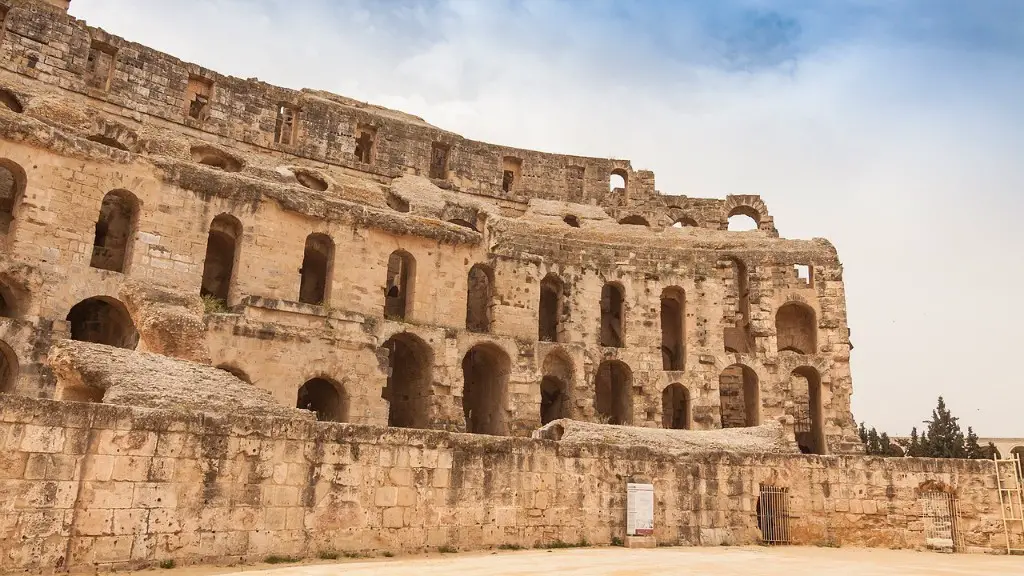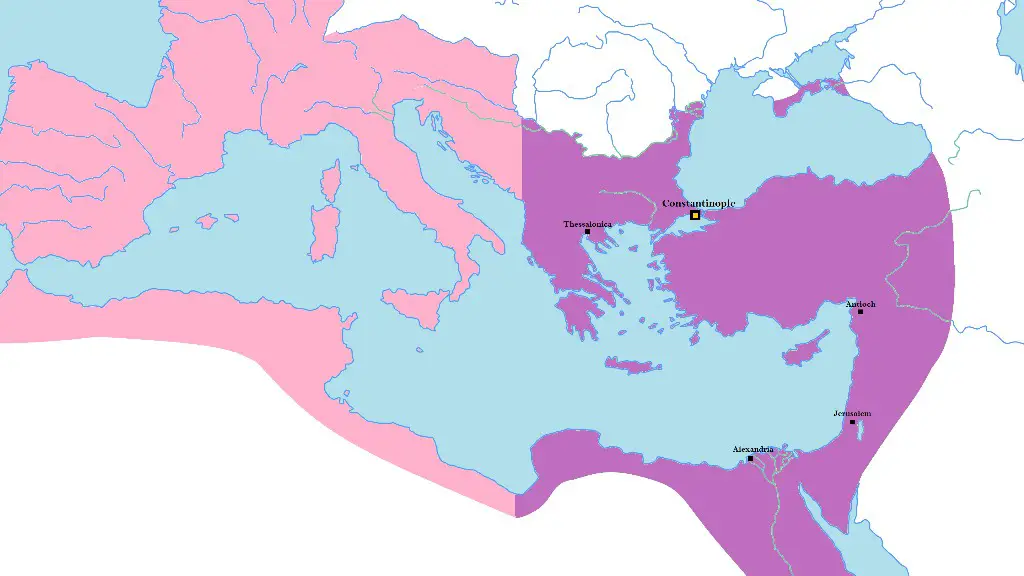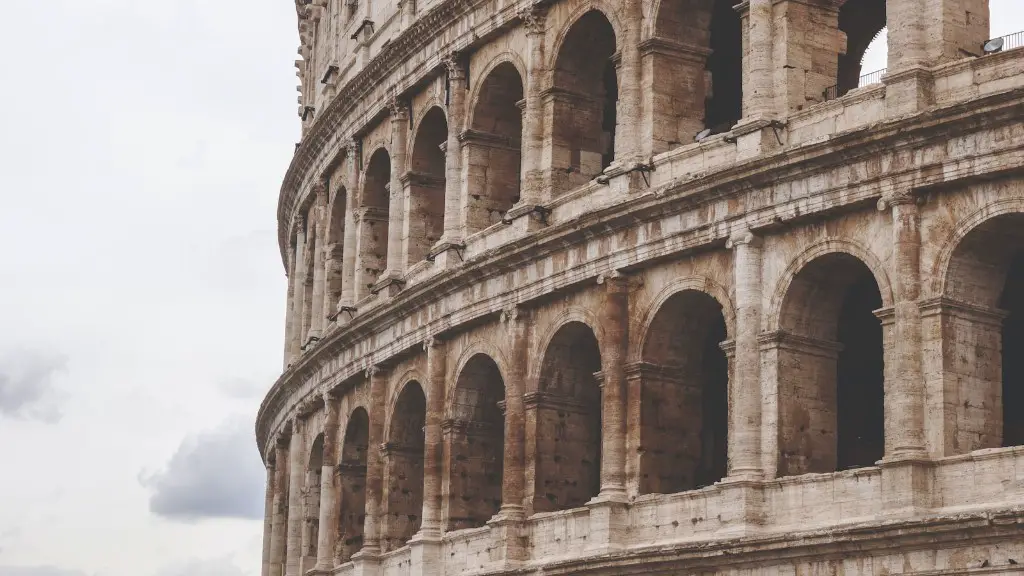Ancient Rome was a powerful and influential city-state that was once the center of Western civilization. It was founded in 753 BCE by the twin brothers Romulus and Remus, the sons of Mars, the god of war. The city sprawled along the banks of the Tiber River located in central Italy, though its expansive period of growth and power would spread to encompass much of the Mediterranean region, including northern Africa and the islands of today’s Greece.
At its peak, Ancient Rome was an impressive city with a population of over one million people. It was filled with stunning monuments, temples, and amphitheaters, including the world-renowned Colosseum, which hosted a variety of sporting events, gladiator competitions, and wild animal shows. Home to powerful Roman Emperors such as Julius Caesar and Augustus, it was a center of art, commerce, and legal authority. Ancient Rome boasted some of the most advanced engineering feats of the ancient world, from its impressive aqueduct system to its massive dome-covered Pantheon.
The legacy of Ancient Rome lives on today in the form of its language, literature, government, and law. The city left an enduring mark on Western Civilization, providing the foundation for much of our modern-day culture. From the language we speak (Latin) to the number system we use (Roman Numerals), to the fact that the Pope is still considered the “head” of the Catholic Church, Ancient Rome’s influence can be seen in almost every aspect of life today.
The ruins of Ancient Rome can still be explored throughout the city of Rome today, including the iconic Colosseum, the Pantheon, the Roman Forum, and other notable structures and monuments. In fact, many of these ancient ruins still stand today, providing a glimpse into life in Ancient Rome and its vibrant and often tumultuous past.
Ancient Rome’s Political System
Ancient Rome was run using a complex system of politics. The Roman Senate, made up of wealthy and influential families, held power and controlled the laws and regulations of the city. The Senate was highly organized, with each senator having the power to vote on issues and laws. They also voted for people to hold office, though who could actually vote was determined by age, wealth, and gender. Over time, the power of the Senate shifted to the Roman Emperors, with some of the most powerful and ambitious among them, such as Julius Caesar and Augustus, becoming virtual dictators who held control of the entire city.
Roman Engineering and Constructions
The engineering feat of the ancient Romans were remarkable. They were a civilization that built vast roads, dams, and aqueducts. The roads, which spanned hundreds of miles, were built in a straight line, often linking cities, forts and settlements. The aqueducts of the Romans were far advanced for their time, using gravity and sloping channels to transport water to the city’s fountains, bathhouses and public toilets. To this day, many of these structures stand intact, a reminder of how far the Romans were able to progress in the field of engineering and architecture.
Decline of Ancient Rome
Ancient Rome faced several challenges as it grew in size and power. These challenges included political unrest, economic struggles, and barbarian invasions. By the 4th century CE, the challenges had become too much and the city was too weakened by its own success to remain a superpower. Over the course of the next two centuries, Rome was sacked, conquered and eventually abandoned by its citizens.
The Legacy of Ancient Rome
Though the city of Rome fell from its former glory, the legacy of Ancient Rome lives on today in the form of its language, literature, government, and law. The Latin language, for example, serves as the basis for many modern Romance languages, such as Spanish, French, and Italian. Roman-style law, with its focus on individual rights, also formed the basis for much of modern-day legal systems.
Architectural Styles
Ancient Roman architecture set the bar high, thanks in part to the Romans’ use of arch and vault construction. This innovation allowed them to create impressive structures that were much larger and more stable than anything that had ever been seen before. The Colosseum is perhaps the most famous example of Roman architecture, with its arches, domes, and vaults rising high above Rome. The Pantheon is another example, featuring its iconic dome, as well as its intricate flooring and wall frescoes.
Government Structures
The ancient Roman government was a complex system of laws and regulations put in place to ensure the safety and prosperity of its citizens. This system was divided into several branches: the Senate, the Assembly, and the Emperor. Each branch had its own set of responsibilities and powers. The Senate, which was made up of wealthy and influential families, held the most power and was responsible for the laws and regulations of the city. The Assembly, which was made up of all citizens, had the power to elect leaders, while the Emperors held the ultimate authority.
Roman Religion
The ancient Romans believed in a variety of gods and goddesses, a pantheon of divine figures known as the “Roman Pantheon”. The main gods included Jupiter, Mars, Venus, Mercury, Minerva, and Juno. These gods and goddesses were thought to rule over various aspects of life, from war and protection, to love and fertility. Worship of the gods was an important part of life in Ancient Rome, with elaborate temples and rituals used to honor them.
Culture and Traditions
Ancient Roman culture was deeply rooted in tradition, with a strong sense of values, beliefs, and behaviors that were passed down from one generation to the next. The Romans were also renowned for their art and literature, as well as their sophisticated theater, sculpture, and architecture. Much of the art and culture of ancient Rome survives to this day, providing a fascinating glimpse into the culture of a civilization that once ruled the Mediterranean.


